麻雀优化算法(Sparrow Search Algorithm, SSA)是2020年提出的智能优化算法,SSA算法受到庥雀觅食行为和反捕食行为的启发而提出,属于智能仿生算法中粒子群优化算法(PSO)的其中一种,用于模拟群体智能所产生的一种进化计算技术(Evolutionary Computation)。相较于其他智能优化算法,麻雀搜索算法是一种高效、灵活、内存占用低、易于实现的搜索算法,适用于大规模搜索问题。
麻雀搜索算法的基本思想是将搜索空间分成若干个子空间,然后对每个子空间进行搜索,直到找到目标或搜索空间为空为止。仿生算法是一种基于生物进化思想的算法,如粒子群算法PS0通过模拟生物进化过程,逐步优化解法,最终找到最优解。麻雀搜索算法更加注重局部最优解,在一定程度上克服了PS0算法的局限性。
关于麻雀算法的原理本篇文章就不再细讲,相关文献有很多,采用麻雀算法在CEC2005函数上进行测试,并将麻雀算法(SSA)与灰狼算法(GWO),粒子群(PSO)算法进行对比,结果如下:

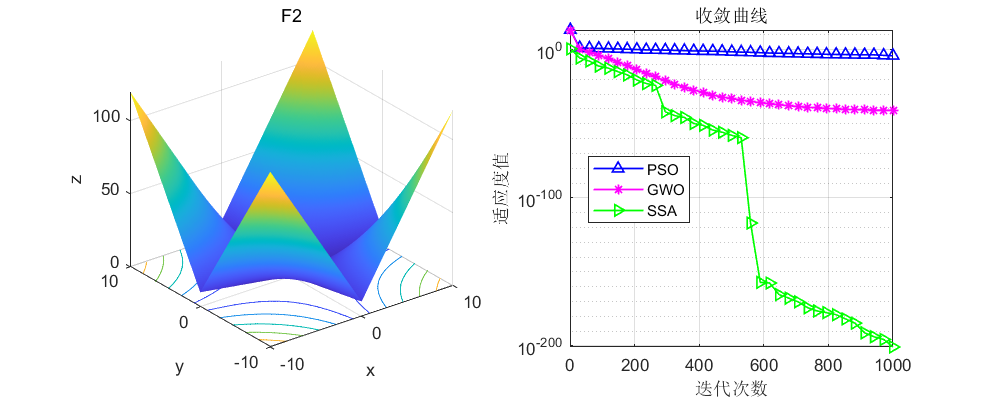
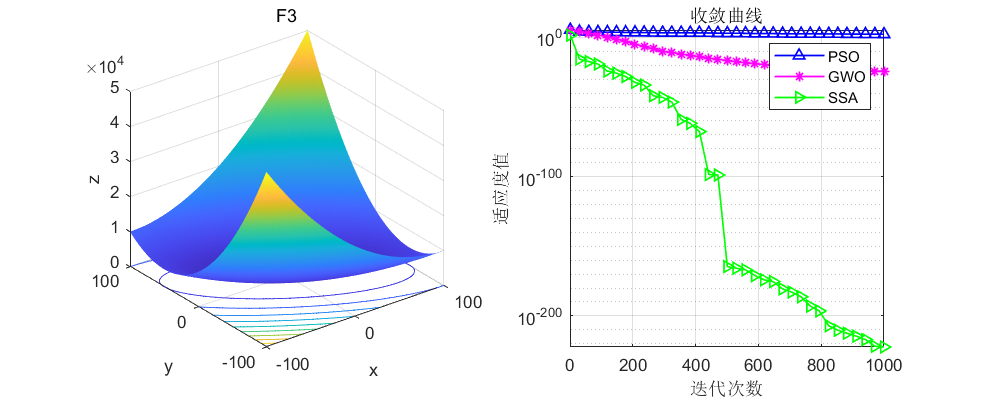
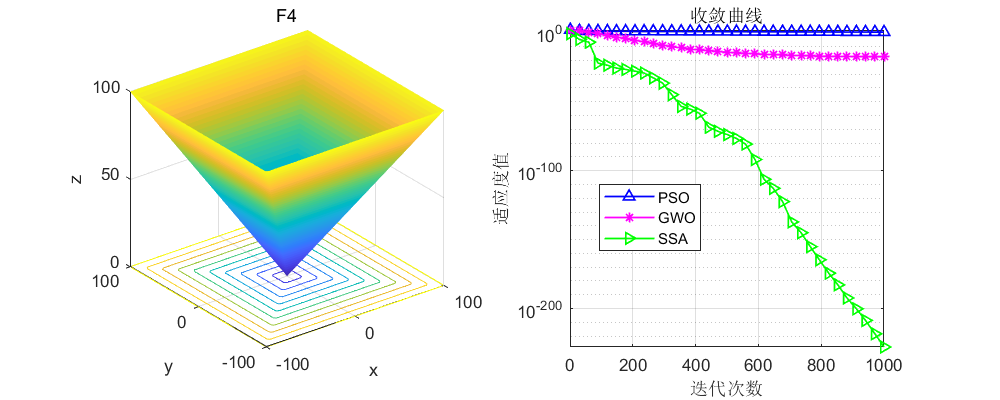
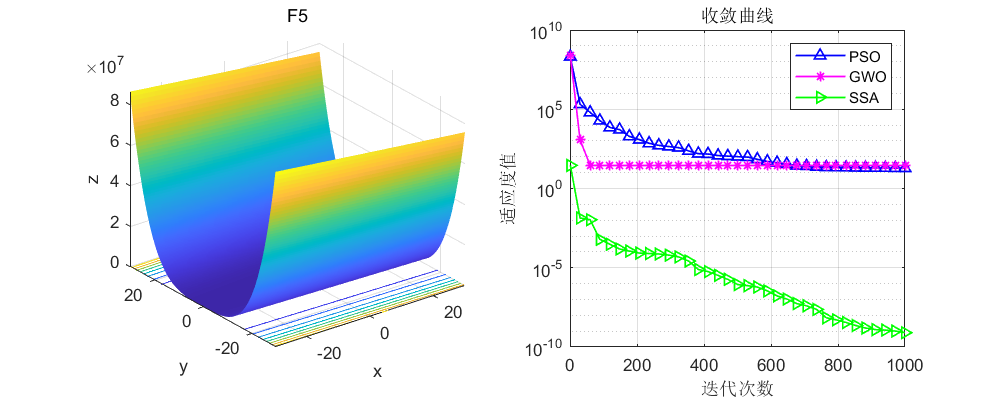
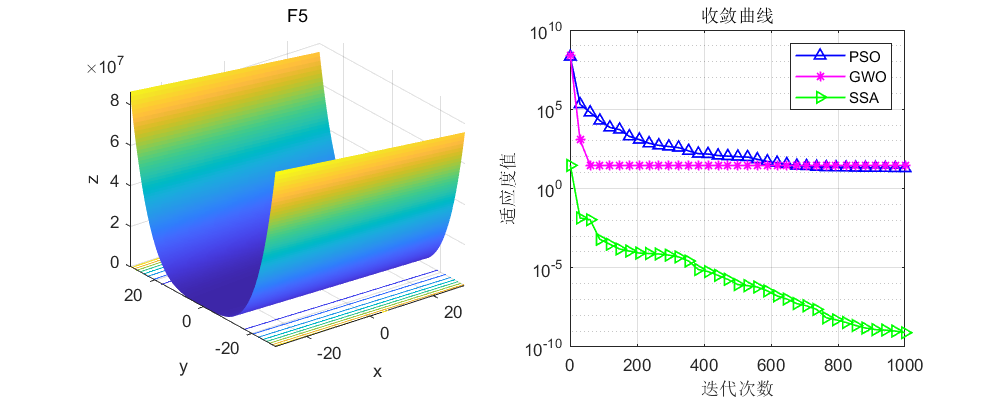
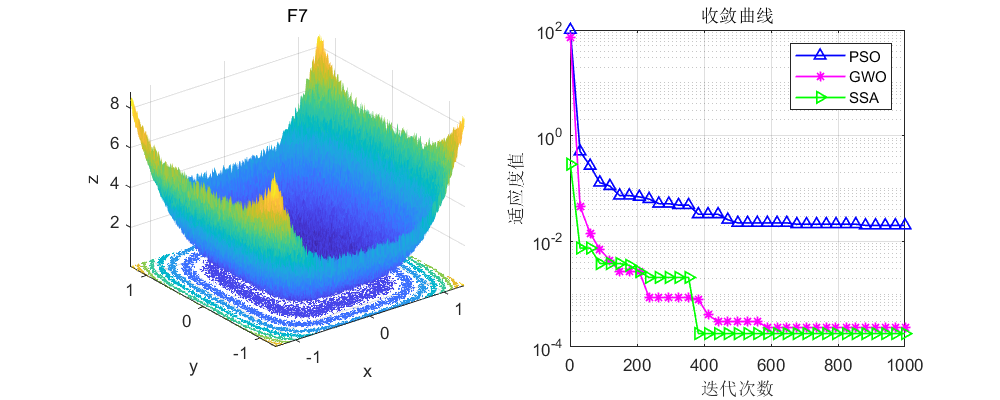
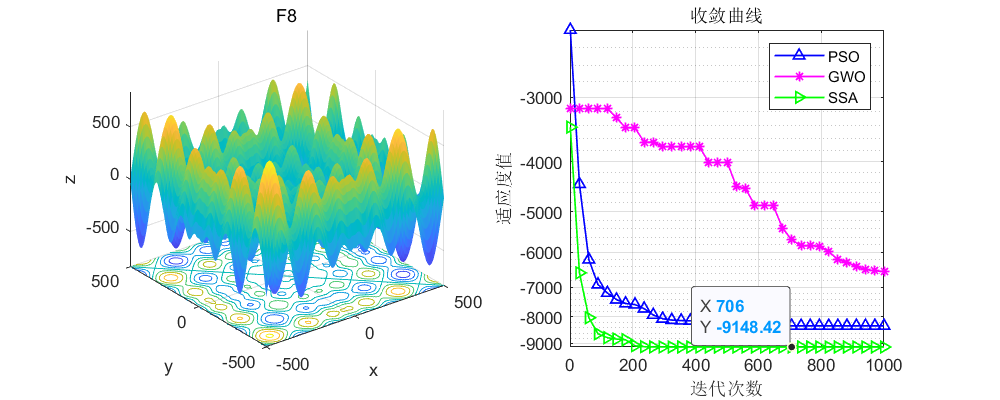

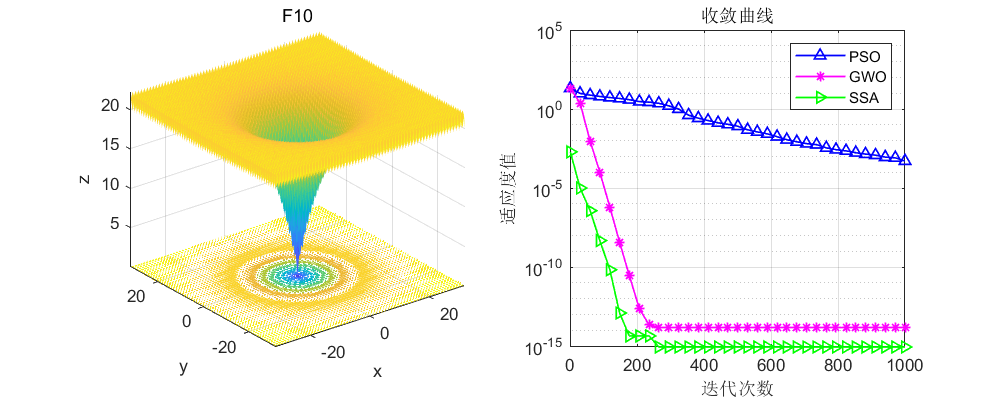
评价:对前10个函数的测试中,可以看到麻雀算法无论是在寻优精度还是收敛速度上都优于GWO和PSO,不得不说,该算法的性能确实不错。如果在这个算法上再做一些改进,会得到更好的效果。
改进思路浅谈:以F1,F2,F3函数的结果为例进行观察,SSA算法在前期的收敛速度并不快,而到了中期的收敛速度却很快,此时大家可以考虑的改进方法可以在前期添加一些混沌映射,使粒子的多样性增加。而在后期的寻优速度再次下降,此时可以考虑引入莱维飞行或黄金正弦算法进行改进。
有关融合混沌映射、莱维飞行、黄金正弦的案例在之前的文章中也有提及,大家可以相互对比着来进行改进。文章链接如下:
融合黄金正弦,十种混沌映射,搞定!把把最优值,本文思路可用于所有智能算法的改进
基于改进莱维飞行和混沌映射(10种混沌映射随意切换)的粒子群优化算法,附matlab
接下来直接上SSA代码,大家直接复制即可:
function [fMin , bestX,Convergence_curve ] = SSA(pop, M,c,d,dim,fobj )
P_percent = 0.2; % The population size of producers accounts for "P_percent" percent of the total population size
pNum = round( pop * P_percent ); % The population size of the producers
lb= c.*ones( 1,dim ); % Lower limit/bounds/ a vector
ub= d.*ones( 1,dim ); % Upper limit/bounds/ a vector
%Initialization
for i = 1 : pop
x( i, : ) = lb + (ub - lb) .* rand( 1, dim );
fit( i ) = fobj( x( i, : ) ) ;
end
pFit = fit;
pX = x; % The individual's best position corresponding to the pFit
[ fMin, bestI ] = min( fit ); % fMin denotes the global optimum fitness value
bestX = x( bestI, : ); % bestX denotes the global optimum position corresponding to fMin
% Start updating the solutions.
for t = 1 : M
[ ans, sortIndex ] = sort( pFit );% Sort.
[fmax,B]=max( pFit );
worse= x(B,:);
r2=rand(1);
if(r2<0.8)
for i = 1 : pNum % Equation (3)
r1=rand(1);
x( sortIndex( i ), : ) = pX( sortIndex( i ), : )*exp(-(i)/(r1*M));
x( sortIndex( i ), : ) = Bounds( x( sortIndex( i ), : ), lb, ub );
fit( sortIndex( i ) ) = fobj( x( sortIndex( i ), : ) );
end
else
for i = 1 : pNum
x( sortIndex( i ), : ) = pX( sortIndex( i ), : )+randn(1)*ones(1,dim);
x( sortIndex( i ), : ) = Bounds( x( sortIndex( i ), : ), lb, ub );
fit( sortIndex( i ) ) = fobj( x( sortIndex( i ), : ) );
end
end
[ fMMin, bestII ] = min( fit );
bestXX = x( bestII, : );
for i = ( pNum + 1 ) : pop % Equation (4)
A=floor(rand(1,dim)*2)*2-1;
if( i>(pop/2))
x( sortIndex(i ), : )=randn(1)*exp((worse-pX( sortIndex( i ), : ))/(i)^2);
else
x( sortIndex( i ), : )=bestXX+(abs(( pX( sortIndex( i ), : )-bestXX)))*(A'*(A*A')^(-1))*ones(1,dim);
end
x( sortIndex( i ), : ) = Bounds( x( sortIndex( i ), : ), lb, ub );
fit( sortIndex( i ) ) = fobj( x( sortIndex( i ), : ) );
end
c=randperm(numel(sortIndex));
b=sortIndex(c(1:20));
for j = 1 : length(b) % Equation (5)
if( pFit( sortIndex( b(j) ) )>(fMin) )
x( sortIndex( b(j) ), : )=bestX+(randn(1,dim)).*(abs(( pX( sortIndex( b(j) ), : ) -bestX)));
else
x( sortIndex( b(j) ), : ) =pX( sortIndex( b(j) ), : )+(2*rand(1)-1)*(abs(pX( sortIndex( b(j) ), : )-worse))/ ( pFit( sortIndex( b(j) ) )-fmax+1e-50);
end
x( sortIndex(b(j) ), : ) = Bounds( x( sortIndex(b(j) ), : ), lb, ub );
fit( sortIndex( b(j) ) ) = fobj( x( sortIndex( b(j) ), : ) );
end
for i = 1 : pop
if ( fit( i ) < pFit( i ) )
pFit( i ) = fit( i );
pX( i, : ) = x( i, : );
end
if( pFit( i ) < fMin )
fMin= pFit( i );
bestX = pX( i, : );
end
end
Convergence_curve(t)=fMin;
end
% Application of simple limits/bounds
function s = Bounds( s, Lb, Ub)
% Apply the lower bound vector
temp = s;
I = temp < Lb;
temp(I) = Lb(I);
% Apply the upper bound vector
J = temp > Ub;
temp(J) = Ub(J);
% Update this new move
s = temp;
%---------------------------------------------------------------------------------------------------------------------------需要的同学直接粘贴用于自己的实际问题即可。后续会对麻雀算法进行改进,敬请关注。
下方卡片回复关键词,获取完整代码,关键词:TGDM1209